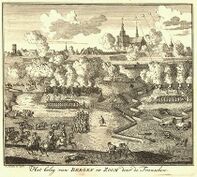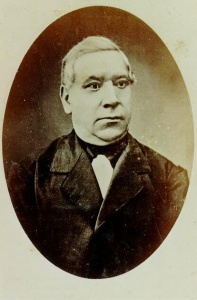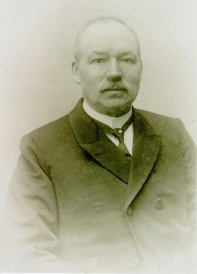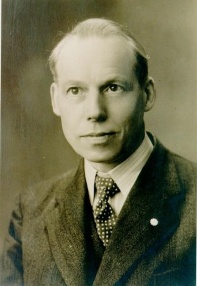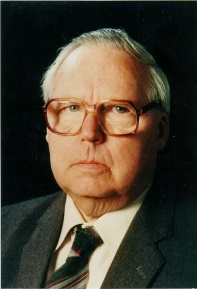Benutzer:Andriessen/en/History: Unterschied zwischen den Versionen
| (37 dazwischenliegende Versionen desselben Benutzers werden nicht angezeigt) | |||
| Zeile 7: | Zeile 7: | ||
{{Fünf Tabs/2| | {{Fünf Tabs/2| | ||
| − | Benutzername=Andriessen/ | + | Benutzername=Andriessen/en| |
TAB 1=Piet Andriessen| | TAB 1=Piet Andriessen| | ||
TAB 2=History| | TAB 2=History| | ||
| − | TAB 3= | + | TAB 3=Interesting watches and clocks| |
| − | TAB 4= | + | TAB 4=Repairs| |
| − | TAB 5=Contact| | + | TAB 5=Contact us| |
<!-- Farbwerte Hintergrund ohne "#" --> | <!-- Farbwerte Hintergrund ohne "#" --> | ||
TAB inaktiv=e3e3e3| | TAB inaktiv=e3e3e3| | ||
TAB aktiv=FFFFFF| | TAB aktiv=FFFFFF| | ||
| − | Zelle 1=[[ | + | Zelle 1=[[Datei:Beleg van Bergen op Zoom 1747.jpeg|197px|center]]<center><small>'''The Siege of Bergen op Zoom 1747'''</small></center> <br>[[Datei:Het Nederlandsch Koffiehuis, Grote Markt 19.jpg|197px|center]]<center><small>'''The Dutch Coffee House<br>Grote Markt 19'''</small>| |
| − | Zelle 2=< | + | Zelle 2=<br><br>'''<big><big>Our family history in Bergen op Zoom</big></big>'''<br><br> |
| − | <br> | + | '''[[Andriessen/de|Andriessen]] settles in Bergen op Zoom''' |
| − | + | Long before [[1700/nl|1700]] there are Andriessen families in Bergen op Zoom and the surrounding area, one of these families starts with a certain '''Jordanus Andriessen'''(Jordanus Andreae) who marries Catharina Jansen on Tuesday [[4. Februar|February 4,]] [[1642/de|1642]] in Essen, he died on [[28. Mai|May 28,]] [[1660/de|1660]] in Essen (Spilbeek). One of his children, '''Nicolaus Janssen Andriessen''' was baptized in Nispen in [[1656/de|1656]] but lived in Essen, now in Belgium. Essen belonged to the parish of Nispen but was not located in the Marquisate of Bergen op Zoom. According to Belgian sources, the origin of the Andriessen families lay north of Turnhout. Even today, several Andriessen families live in Ravels and Essen. In [[1722/de|1722]] a certain '''Johannes Claessen Andriessen''', the son of Nicolaus Janssen Andriessen, is working as a farmer and widower from Essen in Borgvliet, south of the city of Bergen op Zoom. It is a settlement that already existed before 1200, making it one of the oldest in West Brabant. Johannes Claessen Andriessen, known as Jan for short, married Theuntje Cornelissen Meeuwense on [[17. April|April 17,]] [[1726/de|1726]]. His first marriage to Paulina Rombouts van Caem was probably concluded on [[24. Mai|24 May,]] [[1722/de|1722]] in Bergen op Zoom, and was therefore of short duration. His second marriage to Theuntje is also short, because he becomes a widower again. On [[15. Februar|February 15,]] [[1733/nl|1733]] he marries for the third time to a certain Gregoria Verdult. From this marriage no less than 9 children were born, and Jan thus became the progenitor of many Andriessen families in the Netherlands. Jan Andriessen died on [[19. Dezember|December 19,]] [[1746/de|1746]] a few months before the French siege in [[1747/de|1747]], his youngest child Gommaris had just been baptized. Due to all the war violence, Borgvliet was unable to develop further as a village. Even after the French invasion of 1747, it remained a small village with only a few farms and a pump. Bergen op Zoom was taken, plundered and set on fire. The losses during the siege can be called disproportionate: 5,250 dead on the French side and about 5,000 on the Dutch. The city was plundered and burned for hours after its capture, with approximately 2,000 of the 5,000 inhabitants losing their lives and around 1,000 wounded. The brutal plundering of the city was condemned throughout Europe, and only three of Jan's children are known to have survived the siege. His eldest son Jacobus Andriessen became a citizen of the city of Bergen op Zoom in [[1763/de|1763]], and in addition to being a farmer, he was also a "coffee house owner" or innkeeper. Eventually he would owns the famous coffee house "den Engel". (Later the Dutch coffee house and the former Roxy cinema, from December 2007 a dance school and since 2013 again in use as a cafe, a party venue and Theater "den Engel"). Apparently they did very well, as many family members worked in the business. Grandson '''Gabriël Andriessen''', born in [[1818/de|1818]], was able to go to school as a young boy, which meant that his father had a reasonable income. Gabriel Andriessen was the founder of the watch and jewelry company in 1848.<br><br><br>| | |
| − | Zelle 3=<center>[[Bild:Gabriel Andriessen.jpg|197px]]</center>| | + | Zelle 3=<center>[[Bild:Gabriel Andriessen.jpg|197px]]</center><br>| |
| − | Zelle 4='''Gabriël Andriessen (29.10.1818 – 11.7.1884)''' | + | Zelle 4='''[[Andriessen, Gabriël/de|Gabriël Andriessen]] (29.10.1818 – 11.7.1884)''' |
| − | Gabriël Andriessen was unfortunately lame and could not keep up with the farm and it would certainly not be easy for him to be an innkeeper either. However, he was a good student and it was decided to choose a suitable profession for him. He would leave for Brussels to train as a "watchmaker", according to tradition he had lodgings with a distant relative. When he returned to Bergen op Zoom he started his own company and on [[18. Juli | + | Gabriël Andriessen was unfortunately lame and could not keep up with the farm and it would certainly not be easy for him to be an innkeeper either. However, he was a good student and it was decided to choose a suitable profession for him. He would leave for Brussels to train as a "watchmaker", according to tradition he had lodgings with a distant relative. When he returned to Bergen op Zoom he started his own company and on [[18. Juli|18. July]] [[1848/de|1848]] registered himself in the guarantee register as a merchant of gold and silver watches. Shortly afterwards he was able to rent his own building in the Engelse Staat number 42. This building called "Romeijn" dated from [[1610/de|1610]] and it was also here that his son and later successor Dionisius Cornelis was born. However, the building was demolished in [[1889/de|1889]] to make way for a larger building. In [[1859/de|1859]] Gabriel and his family moved to the Bosstraat to set up a larger shop. (now Bosstraat 1) In [[1884/de|1884]] Gabriël dies, a year earlier '''Dionisius Cornelis Andriessen''' had already taken over the company. The deed of the takeover of the goods from that time gives a nice picture of what was in stock at that time.<br><br><br><br><br><br>| |
| − | | | ||
| − | + | Zelle 5=<center>[[Bild:Dyonisius Cornelis Andriessen.jpg|197px]]</center><br>| | |
| − | + | Zelle 6='''[[Andriessen, Dionisius Cornelis/de|Dionisius Cornelis Andriessen]] (27.2.1855 – 4.9.1912)''' | |
| − | Zelle 5=<center>[[Bild:Dyonisius Cornelis Andriessen.jpg|197px]]</center>| | ||
| − | Zelle 6='''Dionisius Cornelis Andriessen (27.2.1855 – 4.9.1912)''' | ||
Dionisius Cornelis turned out to be not only a talented watchmaker but also very artistic. As a young boy he already showed himself to be a gifted draftsman and at first it was not at all certain whether he would be able to take over his father's business, the clientele doubted whether he was as good as his father. He had rather modern ideas. For example, he was a strong advocate of the new flat French watches instead of the thick heavy English clocks. His first job was not as a watchmaker but he was appointed by the municipal authorities as "supervisor of hand drawing in the Stadsteekenschool", where he himself had been a pupil. After three years he decided to call it a day and resigned in [[1875/de|1875]] and went to work in his father's business. He increasingly takes over the work and since his marriage in [[1881/de|1881]], there is increasing talk of taking over the company, which then actually happens in [[1883/de|1883]]. | Dionisius Cornelis turned out to be not only a talented watchmaker but also very artistic. As a young boy he already showed himself to be a gifted draftsman and at first it was not at all certain whether he would be able to take over his father's business, the clientele doubted whether he was as good as his father. He had rather modern ideas. For example, he was a strong advocate of the new flat French watches instead of the thick heavy English clocks. His first job was not as a watchmaker but he was appointed by the municipal authorities as "supervisor of hand drawing in the Stadsteekenschool", where he himself had been a pupil. After three years he decided to call it a day and resigned in [[1875/de|1875]] and went to work in his father's business. He increasingly takes over the work and since his marriage in [[1881/de|1881]], there is increasing talk of taking over the company, which then actually happens in [[1883/de|1883]]. | ||
| − | Two girls have already been born in the family, but a son as successor only presents himself in [[1886/nl|1886]] Cornelis Johannes Gabriël. Eventually the family consists of 9 children, 5 of whom end up in the jewelry trade. | + | Two girls have already been born in the family, but a son as successor only presents himself in [[1886/nl|1886]] Cornelis Johannes Gabriël. Eventually the family consists of 9 children, 5 of whom end up in the jewelry trade. Three sons became clergymen, '''[[Andriessen, Piet (1)/nl|Piet Andriessen]]''' first became a watchmaker and later a missionary priest in Bondo Congo. As the family grew, the company also grew; in addition to watches, the sale of gold and silverware was also taken up. In addition to the building on Bosstraat, the buildings Grote Markt 22 and 22a were purchased. D.C. Andriessen not only expanded the company, but he was also very active socially, including in the R.K. Poor Board and the board of the poorhouse, which is still known as "de Blok". His sudden death was not only a shock for the family but apparently also a loss for the city, given the reporting in the newspapers of those days.<br><br>| |
| − | |||
| − | Zelle 7=<center>[[Bild:Andriessen Cornelis.JPG|197px]]</center>| | + | Zelle 7=<center>[[Bild:Andriessen Cornelis.JPG|197px]]</center><br>| |
| − | Zelle 8='''[[Andriessen, | + | Zelle 8='''[[Andriessen, Cornelis/de|Cornelis Andriessen]] (20.4.1886 – 25.4.1982)''' |
| − | |||
| − | |||
| − | |||
| + | It was quite a challenge for the young Cornelis and his brother Antoine to take over their father's company at such a young age. Admittedly, they had received a solid education at home and were good at their trade. Cornelis would take over the watch department and the optics department. Antoine was given the management of the goldsmith's shop (which can still be seen at Grote Markt 25, now a restaurant). The company was split into two separate businesses. The oldest part of the shop on Bosstraat was converted into a house for the widow, and the building on Grote Markt "St. Jacob" was expanded with the building next door "De Ketel". The old characteristic shop front was expanded entirely in style according to the original design by Architect van Genk. In [[1917/nl|1917]] the outdoor clock was hung on the facade. It was ordered from the firm [[Bahnzeit]] in [[Glashütte]] near Dresden in Germany. This small town is still known today for its watchmaking industry. '''[[Andriessen, Jacques/nl|Jacques Andriessen]]''' , Cornelis' youngest brother, but also his brother-in-law '''[[Verhagen, Cornelis|Cor. Verhagen]]''' were able to complete their education there at the [[Deutsche Uhrmacherschule Glashütte|Deutsche Uhrmacherschule]]. If circumstances prevented Cornelis from attending this famous school, his son and successor '''Bernard Andriessen''' was able to do so. However, Cornelis was very gifted and a solid craftsman. The seconds regulator he built is a fine example of this. His dedication to the profession was reflected in his involvement in vocational training in the Netherlands, for many years and into old age. Many watchmakers took their exams with him. He was also known beyond the borders for his work as a board member of the Union Horlogère [[Alpina]]. He also had a special watch spring he had developed patented. His great hobby was billiards, which he often took as seriously as his profession. At the age of 80, he did not mind going on holiday to his son Piet in America.<br><br>| | ||
Zelle 9=<center>[[Bild:Andriessen, Bernard.jpg|197px]]</center>| | Zelle 9=<center>[[Bild:Andriessen, Bernard.jpg|197px]]</center>| | ||
| − | Zelle 10='''[[Andriessen, Bernard/ | + | Zelle 10='''[[Andriessen, Bernard/de|Bernard Andriessen]] (16.4.1915 – 19.9.1987)''' |
| − | |||
| − | |||
| − | |||
| − | |||
| + | Bernard, as the eldest son, was destined to follow in his father's footsteps in the trade, so he first received his training in the parental business, before enrolling in the Deutsche Uhrmacherschule in [[1936/nl|1936]]. Here he made a micrometer, his own pocket watch and a model of a escapement, which is an enlarged model of a balance, lever (anchor in Germen an Dutch) and escapement wheel as can also be found in a watch. For his special achievements he received the [[Grossmann-Stiftung|Moritz Grossmann]] certificate. He also obtained his "Master" title in the Netherlands. For many years he was a member of the examination committee and board member of the [[Vakschool Schoonhoven/nl|Vakschool Schoonhoven]]. In addition to his watchmaker training he was very interested in electronics. The rise of radio and later television made him decide to pioneer in this direction as well. After the takeover by his son Piet in [[1979/de|1979]] these activities and also the optics were sold off. The departure of the business of Antoine and his descendants to Steenbergen gave the opportunity to sell jewelry in the business founded by Gabriël Andriessen. At the end of the 70s, he re-established ties with his fellow students from the school in Glashütte. These had been completely lost due to the war. Bernard remained active in the business until his death.<br><br><br><br><br>| | ||
Zelle 11= | | Zelle 11= | | ||
Zelle 12= | | Zelle 12= | | ||
| Zeile 65: | Zeile 56: | ||
|} | |} | ||
| + | [[Kategorie:Biographie]] | ||
| + | [[Kategorie:Biographie A]] | ||
| + | [[Categorie:English]] | ||
Aktuelle Version vom 4. Februar 2025, 14:08 Uhr
|
